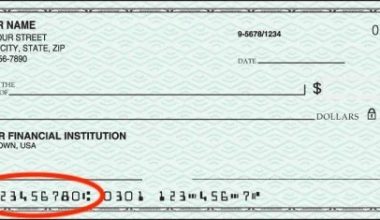Many file formats that were popular in the past are becoming less popular as technology evolves. When you need to open one of these old files, there are usually particular procedures you may take to verify that the data in that file is safe and that you can effectively see it. In this article, we discuss how to open and read a BIN file easily on your computer using different methods. Let’s get to it.
What Is a BIN File
A BIN, or binary file, is a file format that is not human-readable. BIN files are composed of binary computer codes and have a wide range of applications. The software that you use to access a BIN file determines how it interprets it. A bin file, for example, can display a picture while also serving as a firmware update for a Blu-ray player.
Even when opened with a code editor, BIN files don’t make much sense to the human eye. The software that is waiting for this BIN file, on the other hand, has the necessary infrastructure to read and use it.
How to Open & Read a BIN file
Consider the three approaches below to learn how to open a BIN file:
Burn the file to a disc
Here’s how to burn a BIN file on a blank disc on your computer:
#1. Insert a blank disc
Insert a blank disc into your computer’s disc drive before you can burn a file. This disc drive is typically located on the side of a laptop or the front of a computer stand, where you may remove the drive and place your disc in the available space by pressing a little button. While you can utilize a disc that contains images or videos, you should make sure that whatever disc you select has adequate space for the things in your BIN file, so a blank disc is frequently the best option.
#2. Search for a CUE file
When burning a BIN file, you may need to locate the corresponding CUE file on your computer. A CUE file is a plain-text file that contains the track arrangement on a CD or DVD, and it might be useful for precisely burning the information of BIN files onto a disc. CUE files are normally stored in the same location as their equivalent BIN files and have the same file name as the BIN files but with the.cue suffix. Here’s an example of a BIN and CUE file name that is related:
- filename.bin
- filename.cue
Make a note of where you found the CUE file, since you may need it when using specific burning software applications.
#3. Find a burning program
There are numerous disc-burning applications available online, but it is critical to pick one that supports BIN and CUE formats. Because BIN files are less popular than they once were, there are usually only a few options for burning applications that handle them. Once you’ve found an application, you can install and run it on your computer. This usually opens a dialog box asking you to select a DVD. The blank disc can then be found and selected in your disc drive.
#4. Load the CUE or BIN file
Following the selection of the disc to which you want to burn your file, the burning tool may request you to select a file. Depending on the software, a BIN file, a CUE file, or all of these formats may be required. Locate and choose the BIN or CUE file you want to upload from your list of files. Check that you’ve selected the correct file to burn on your blank CD.
#5. Choose “burn”
After selecting a file from your directories, the burning tool may prompt you with alternatives such as “burn” or “cancel.” Select “burn” so that your computer may begin copying the contents of the BIN or CUE files onto your blank disc. The size of your file may influence how long it takes to burn photographs or movies on a disc. If you eject the disc or select “cancel” while it is burning, the whole contents of the file may not be copied to the disc.
#6. Test your disc
Your computer may notify you when the program has finished burning your BIN or CUE file onto the disc. You can securely remove your disc from the drive after receiving this warning. It’s also a good idea to ensure that you successfully burned the contents of your file onto the disc, so locate the disc in your computer’s folders and test it. You can open the disc by double-clicking on its icon or by right-clicking and selecting “open.” This should open your disc and display the contents of the BIN file in the media player on your computer.
Mount the file to a virtual drive
The following are the methods for mounting a BIN file to a virtual disk for use on your computer:
#1. Find a virtual drive software
Look for virtual drive software that will allow you to mount or attach your BIN file content to the drive so that you can examine it. A virtual drive, in essence, functions as a real disc drive but does not require a physical disc to view the contents of your BIN file. Instead, you can use a virtual drive to build a virtual disc from your BIN and CUE files, which you can then access on your computer.
Install virtual drive software on your device once you’ve found it.
#2. Start the software
After installing the virtual drive software, you can use it. Some programs may start up instantly after installation, but others may require you to look for the program’s icon in your application folder. When you boot the software, you should be able to select from a list of files, which you can then mount on the virtual drive and use as a virtual disc. For quick access, keep your BIN and CUE files in the same folder on your PC.
#3. Choose the CUE file
To access the data of most virtual drive programs, you may need to utilize the associated CUE file rather than the original BIN file. Select the CUE file that corresponds to the BIN file you want to access by clicking on it with your virtual drive’s selection tool. You can modify the name of the file that becomes a virtual disc if you wish to distinguish it from the BIN and CUE files.
#4. Choose “mount”
Your virtual drive may have “mount” buttons that you may use to start mounting your CUE file to the virtual drive and duplicating the contents as a readable virtual disc. The size of your CUE file can affect how long it takes to mount the file to the disk, and it’s critical not to cancel or change your settings while the drive mounts your file. After you finish this process, you can open the virtual disc on your device just like a regular physical disc.
#5. Open the disc on your computer
To check that the mounting operation was successful, locate your virtual disc on your computer and open it. Like a real disc, you can double-click or right-click the icon. The mounted BIN disc differs from a physical disc in that it can only be accessed on your computer via the virtual drive, making it less straightforward to transfer than a physical disc. When you click on the disc icon, your computer’s media player will open, and you may view the images and movies from the original BIN file.
Convert the file into an ISO file
Convert a BIN file to an ISO file by following these steps:
#1. Find a file conversion software
Using file conversion software, you can convert your BIN file into an ISO file, which is an archival file type that directly duplicates the contents of your BIN file. Many of these are available online as web applications or as downloaded computer programs. Look for one that takes BIN files and can convert them to ISO. Because ISO files are more generally acknowledged, you can use them to access the contents of the file in more ways and with more sorts of software packages.
#2. Locate the “convert” tool
Locate the “convert” tool in the conversion software. Depending on the software, you may find this in the tools menu at the top of the program, or it may be in the edit menu. With your cursor, click the “convert” button to launch a dialog box in the conversion program. This frequently opens a list of files on your computer, allowing you to locate the suitable BIN file to convert to an ISO file.
#3. Choose your BIN file
Locate and choose the BIN file you want to open in the conversion program’s dialog box. Make careful to double-check the name and that the file extension is.bin rather than.cue. If you have numerous BIN files to convert, you may be able to select a number of them at once and convert them all at once, although this often increases the conversion time.
#4. Convert the file to an ISO
Before proceeding with the file conversion, ensure that you have the ability to convert a BIN file to an ISO file. Following that, select the “convert” or “start” option on the dialog box and wait for your BIN files to be converted to ISO files. Most tools leave the original BIN files on your computer with the new ISO versions, so before converting numerous BIN files at once, consider your machine’s storage space.
Once the BIN file has been successfully converted to an ISO, you can remove the original file with the.bin extension to free up space, but only if you understand the consequences.
#5. Mount or burn the ISO file
You may then access your ISO file in the same manner that you would an ordinary BIN file, but you have more options for burning and mounting it. Because ISO files are supported by more software packages than BIN files, you may have an easier time finding a burning tool or virtual drive to mount your ISO file and access it as a physical or virtual disc. After you’ve burned or mounted your ISO file, you can open it on your computer like a conventional disc and view the contents.
Opening and Installing BIN File on Android
If you try to open a BIN file on your Android phone, you must first convert the file extension on your system to the correct one and then use the App Installer to introduce the file.
Locate the software installer and enable the download from unknown sources in the settings. Connect your phone to your computer and enable disk mode. Select the computer option from your system’s start button. Its contents can be viewed on your smartphone via a removable storage device. Find the BIN file and rename it to APK.
Then unplug your phone from the PC. Start the app installer, then open the APK file and install it on your device.
How Do I Open a Bin File?
A BIN file cannot be opened directly; to utilize it, you must either burn it to a disc or mount it to a virtual drive. You can also convert the BIN file to an ISO file, which allows you to burn or mount it with many more tools.
Which App Opens Bin Files?
Bin File Opener – Viewer is a portable application. Its interface is divided into four sections: bin viewer, bin to pdf, recent files, and converted files. 2. To examine the Bin files stored on the device, the user just needs to select the first tab, Bin Viewer.
How to Convert a Bin File to PDF?
To convert your first BIN file to PDF, you must first:
- To export the record, connect your cloud storage.
- Send your request for the template by email.
- Look through your desktop for a document.
- Look through the pdf filler Library for a suitable template.
- Insert the file containing the sharing link.
Are Bin Files Safe?
Not entirely. Bin’s creators advise victims not to use anti-virus software or attempt to decrypt files. They claim that any attempt will result in data loss. We recommend that you do not contact the developers of Bin (or any other ransomware) or pay any ransoms.
Can Viruses Be In Bin Files?
Because the file was not run, simply downloading it should not cause any issues. Malware, in general, cannot inflict harm unless it is run. Furthermore,. bin files are not executable by default on Windows, so even if you did click on it, nothing should have happened.
What Can I Do With a Bin File?
It is used for CD images as well as some anti-virus software. It might be anything, such as an image or sound file for a game or a ROM for an emulator. A BIN file must be accompanied by a CUE file. To open it, burn it to a CD or DVD, or mount the image on a vertical drive.
What Happens if I Delete a Bin File?
When you delete a file on your computer and empty the Recycle Bin, your data is not completely erased. Although the file is no longer visible in its original location and your operating system no longer possesses it, a copy of it remains on your hard drive.
What Is Bin Folder Usually For?
On Linux machines, the /bin directory houses all binary executables. This directory contains all of the command line commands as well as additional binary executables.
Conclusion
BIN files are old, yet they are still used, albeit infrequently. It is used for CD images as well as some anti-virus software. It might be anything, such as an image or sound file for a game or a ROM for an emulator. A BIN file must be accompanied by a CUE file. To open it, burn it to a CD or DVD, or mount the image on a vertical drive.
- DISC ASSESSMENT: Definition, Types and Test
- Laundry Equipment: 12 Must-Have Equipments to Start With in 2023 (Updated)
- ENVIRONMENTAL MANAGEMENT SYSTEMS: Types and Basic Elements Of An EMS
- 4 WAYS TO PROTECT YOUR BUSINESS FROM FIRE DISASTER
- CYBERSECURITY RISK MANAGEMENT: Framework, Plan and Services
- OUT-OF-OFFICE EMAIL: Best Ways to Write an Out-Of-Office Message and Examples






